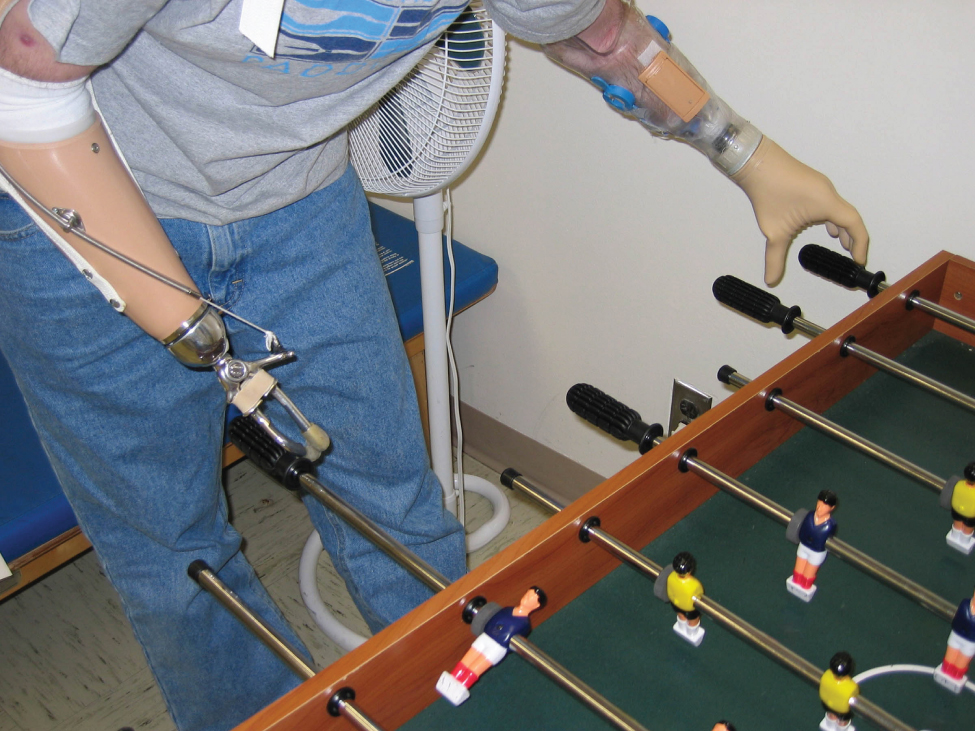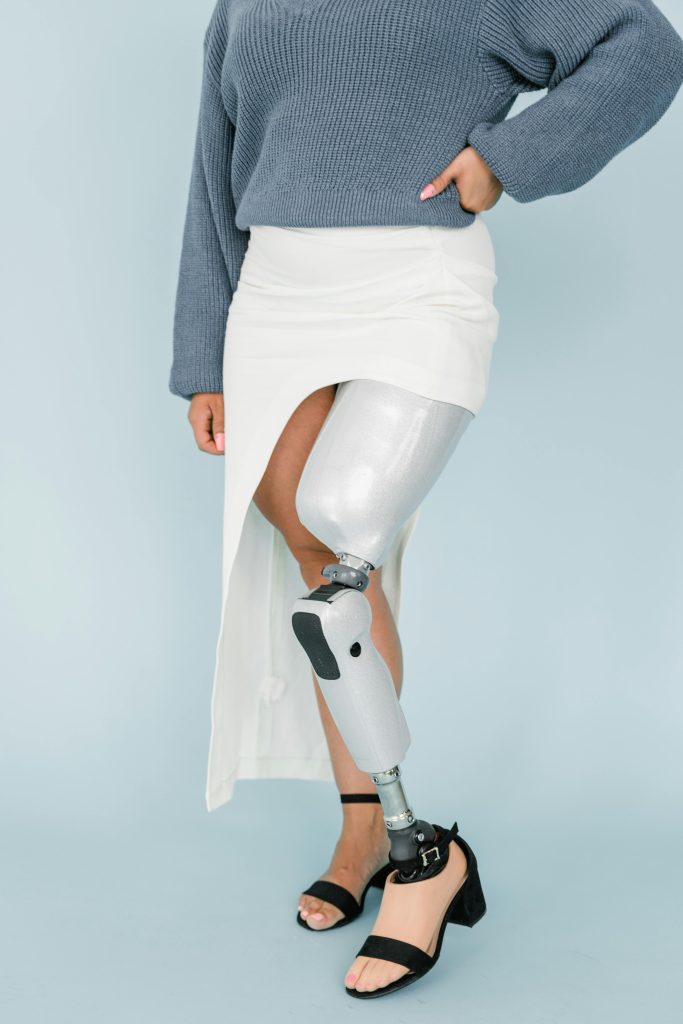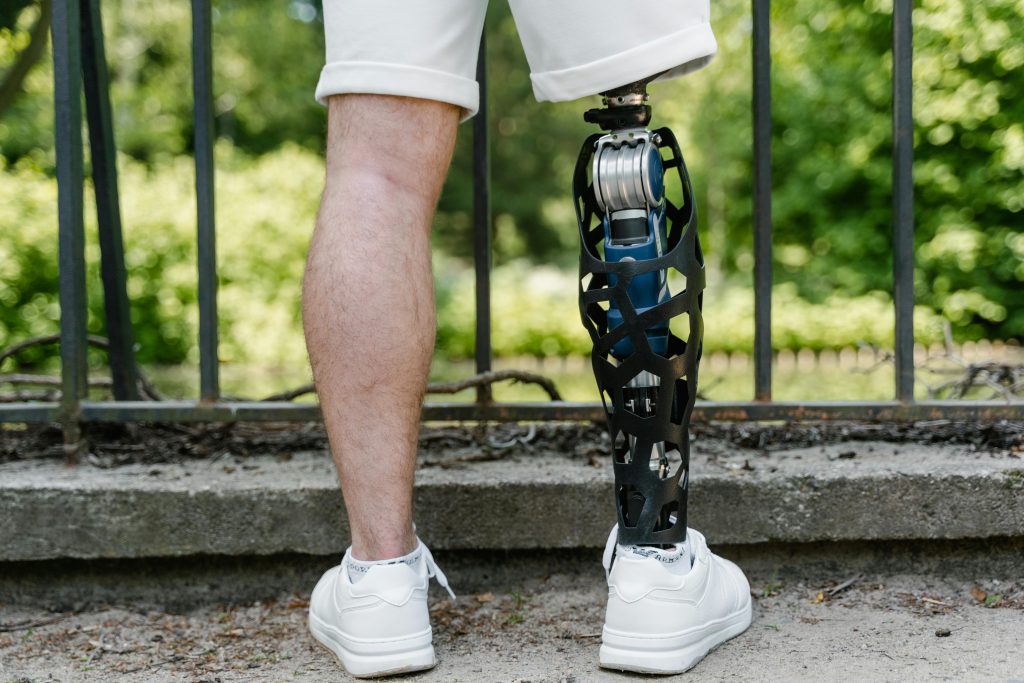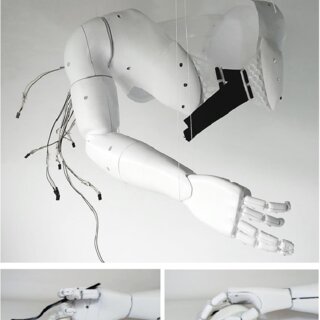The advancements of prosthetics
Prosthetics are an amazing culmination of mechanical and electrical technology combined together to create “replacement” body parts for those who may be lacking them, some of the oldest known prosthetics are two toes found in ancient egypt made out of a paper mache like substance and leather. A second was found to be made around 300 BC, and it was a leg made out of bronze, hollowed out wood, and held up by leather straps. During the 1900s inventors began making improvements that would resemble more of the prosthetics you’d find today, being made out of plastic and artificial materials instead of wood and metal.
Types of Prosthetics
Transradial
These prosthetics are for those missing a hand or arm and require little rehab. Some are passive and purely cosmetic, while others use brain-controlled parts for simple tasks. They are common for upper limb amputees due to their natural movement and balance.
These prosthetics are typically used by those who are missing a hand or an arm, and usually don’t require much rehabilitation. There are also passive ones that do not perform actions and are just there for the cosmetics. Some of those with this type of prosthesis may have brain controlled fingers or parts of their hand that allow them to perform simple tasks. This is the most common prosthetic for those who have had an upper limb amputated, as it has a natural movement and balance system, which means less training to use it.
Transfemoral
These prosthetics fit on the leg, made of metal and plastic, and attach around the upper thigh. A prosthetic foot is added via an ankle cuff system and socket, with a knee joint included. This type requires significant rehabilitation but allows near-normal movement if successful.
These prosthetics fit on the leg and are typically made of metal and plastic, they fit around the upper thigh, and a prosthetic foot can be attached to the leg through an ankle cuff system and a socket. A knee joint is usually included as well. This can be the hardest type of prosthetic to use as it needs a lot of rehabilitation, however if it is successful it allows the person with it to move pretty much like normal.
Transtibial
These replace the lower part of either or both legs, because the knee can already move, they don’t have any motion assistance and instead focus on comfort and weight distribution. Walking with these can pose a challenge and will require rehabilitation, anyone with one will have to learn to walk with it over time.
Transhumeral
Like transtibial prosthetics, these replace part of one or both limbs, but focus on the upper arm to restore functions like movement or typing. They may include wrist articulation or gripping attachments. These can be harder to control since the elbow is not there to assist with motion.
Just like transtibial prosthetics these can replace part of either or both limbs, the difference being that they replace the upper part of the arms and aim to replace a body function like movement or typing. These may include attachments for wrist articulation, or gripping objects. These can be more difficult to control or get used to when compared to other prosthetics as the elbow isn’t there to control some of the motion.
Myoelectricity
A myoelectric signal is an electrical signal generated and sent out by muscles contracting. These signals are extremely complicated and are affected by numerous properties of muscles and the peripheral nervous system. Myoelectric signals dont have a proper description, which can greatly lower the development of new technologies using these signals.
You can feel it, but when you move parts of your body, muscles will emit their own exclusive myoelectric signal, and each different movement results in a unique repeated pattern. Using a large amount of sensors on the skin, you can sense and interpret the coordinated patterns of the muscles as they move. These patterns can be interpreted and decoded by calibrated algorithms that can recognize what the person is attempting to do. This process is a large amount of finely tuned algorithms that detect residual muscle signals in upper limbs for example a hand being opened and closed, or a thumbs up being given, and then gives the prosthesis a signal to do just that.
Myoelectric Prostheses
Myoelectric Prosthetics have many components that are controlled by electrical signals generated by muscles remaining in the limbs, electrodes in the socket detect the signals and send them to the controllers (read pattern recognition (include link). This technology gives access to more strength, many grip patterns, and more natural hand movements made even more effective with TMR (Targeted muscle reinnervation).
Targeted Muscle Reinnervation
Using TMR you can attach amputated nerves to other nerves that can activate muscle. A nerve with no ending can “spark” and cause pain or disorganized information being sent back to the brain, for certain people this can cause phantom pain which is pain that comes from the limb that isn’t a part of the body. TMR connects broken nerves to other functional ones, restoring the normality of the nerves signal.
TMR and Myoelectric Prosthetics
The reinnervated muscle can become amplifiers for the motor signals of the nerve, this can allow for better control of an advanced prosthesis, giving multiple muscles the ability to control a prosthetic limb. After the surgery patients will usually have 4 control sites, 2 for the elbow, and 2 for the hand. These controls are made using the appropriate nerves which makes for a better operated prosthesis. For example: flexing attempting to flex the elbow will cause contracted to the heads of the biceps and triceps, which control the prosthetic elbow. Closing the lost hand causes the medial head on the bicep (which the median nerve is connected to) to contract which allows the prosthetic hand to contract.
Conclusion
In conclusion, prosthetics have advanced significantly, evolving from simple wooden and metal devices to highly functional replacements. Modern technologies like myoelectric prosthetics, pattern recognition, and targeted muscle reinnervation have greatly improved control and movement, offering users a more natural experience. These advancements not only enhance physical capabilities but also help individuals regain confidence and independence, marking a promising future for prosthetic technology.



